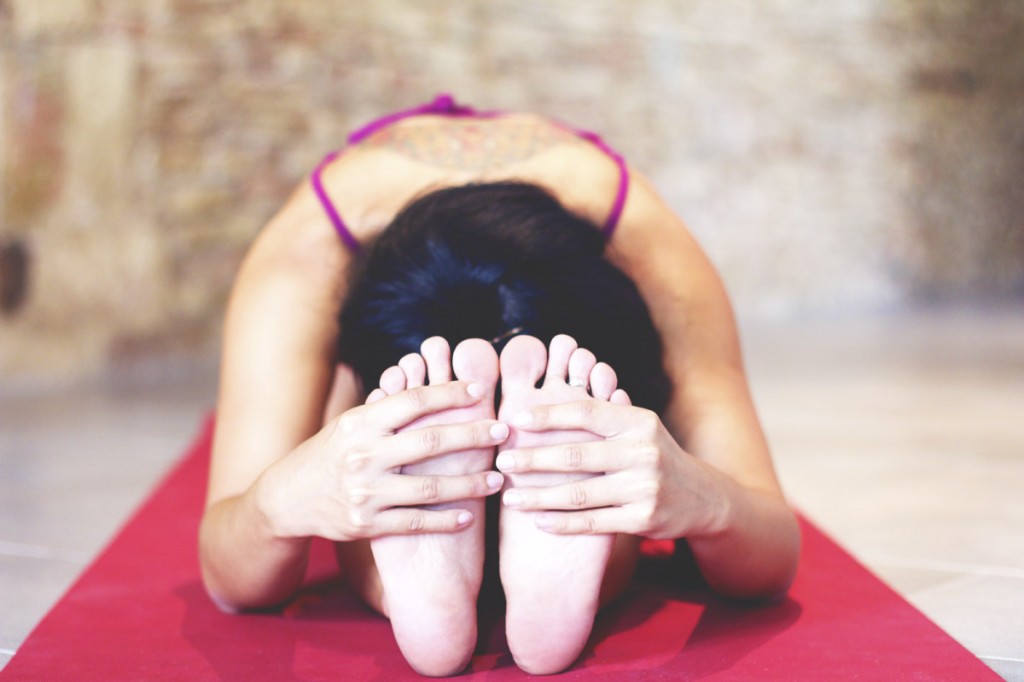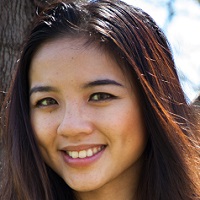Yoga and The Avoidance of Self.
I recently spent a week in a sleepy German countryside at an Ashtanga yoga training.
Aside from discovering my unsurprising dislike for midnight strolls amongst the corn fields (I am a city girl, through and through, it seems), I also discovered that my 10 year practice was somewhat of a farce.
I have always been a relatively flexible person. My mother never ceases to remind me, at the most cringe-worthy times, of my saucy younger self doing naked splits in front of the mirror.
The standing sequence in Ashtanga has never been my friend—my thighs burn, my legs shake, I can never quite keep my front knee from dropping into the midline in Virabhadrasana 2, and I’m constantly being poked and prodded by well meaning instructors to “drop my tailbone,” “engage my core” and “micro bend my knees.”
Over the years, I have somehow found a way to do my standing postures with a measure of ease. I can now get through a strong standing sequence without the feeling of irritation tainting my practice.
I thought I had arrived. Finally, my legs worked.
Untrue.
It seems I have cleverly managed to strengthen the areas that are already strong, using them to compensate for muscles that are weaker. I drop into the areas of my body that offer the least level of resistance, neglecting to move deeper into the muscles that are tight; thereby giving an impression of being extremely flexible while never really stretching anything.
I’m hardly surprised at this charming new realization. The body wants pleasure, not pain. The ego wants validation, not challenge. We consciously or unconsciously seek measures of instant gratification at the sacrifice of the greater long-term goal.
In psychology, this avoidance pattern has a name.
Experiential Avoidance is defined as the attempts to avoid thoughts, feelings, memories, physical sensations and other internal experiences that are perceived as uncomfortable or unpleasant—despite this pattern of avoidance creating problems in the long run.
Note, however, that it is not the actual thoughts, feelings and sensations that are the problem, but the subsequent response to these experiences.
For instance, smoking cigarettes to avoid feeling awkward in social situations, or staying in a “bad” relationship to avoid confrontation, feelings of loneliness or guilt.
In a yoga practice, this could mean avoiding forward folds because they make you feel claustrophobic and scared, or favouring a very dynamic and strong practice because being still makes you anxious and uncomfortable. Or, in my case, doing postures a certain way so that they are manageable and easy.
It would be so easy if we could just do what we liked and were good at and avoid all else, but as we all know, growth happens in that space of challenge.
If what the body experiences is experienced in the mind and vice versa, then time spent on the mat is time spent confronting our deepest insecurities, darkest demons and greatest fears so that we may acknowledge them, unlearn them, find our way back to our purest, truest self and be the best that we can be.
When we avoid postures or sensations in our physical body during our practice, we inadvertently turn away from ourselves.
The practice begins when we stop running away when things get hard, when we surrender (rather than give up) when we no longer know what to do. It is allowing ourselves to feel even when it hurts and don’t want to.
How are we, through avoidance of sensation reinforcing the very patterns we are trying to break with our practice?
How often are we avoiding feeling in our practice?
I invite you to allow yourself to move a little slower the next time you practice. Take the time to feel into your body and notice where there is ease and resistance, and challenge yourself to move into a more unfamiliar space. Not pushing or forcing, but allowing yourself to feel into this new sensation.
Be curious, and take a little step out of your comfort zone. Be present, and embrace all of yourself.
Baby steps, but really, you don’t need a lot to break a habit or change your life.
Love elephant and want to go steady?
Sign up for our (curated) daily and weekly newsletters!
Editor: Emily Bartran
Photo: Author’s Own











Read 2 comments and reply